San Clemente Island is one of my favorite places to dive. Maybe my favorite. I have almost certainly logged more time on a scuba tank here than anywhere else, hundreds of hours. And almost all of those dives have been made jumping off the deck of the M/V Horizon and into the spectacular kelp forests that dot the rocky coast of San Clemente Island. A burp in my travel and diving (pandemic anyone?) has meant I have not been out to San Clemente Island as often as I should have been over the past few years, but that was partially remedied recently by spending a couple days on the Horizon at the very best dive spots at the south end of the island with a bunch of fun like-minded divers. Conditions were great, about an 8 out of 10, with warm, calm, fairly blue and clear water. I didn’t have to wear a bothersome dry suit, so I count that as a win as well.
Seen below is a view of Pyramid Head where, in my opinion, the best diving at the island and some of the best diving in all of California is found. It’s tough to see in this image due to glare on the water, but kelp forests are thick and lush along the coastline here. And the famous horseshoe-shaped reef, a 270-degree turn in the rocky reef wall that surrounds a flat bottom of white sand, is clearly seen here. We spent a lot of time diving various sites between this point and wash rock and point seen about halfway up the bight of the coast on the left (south) side of the island.
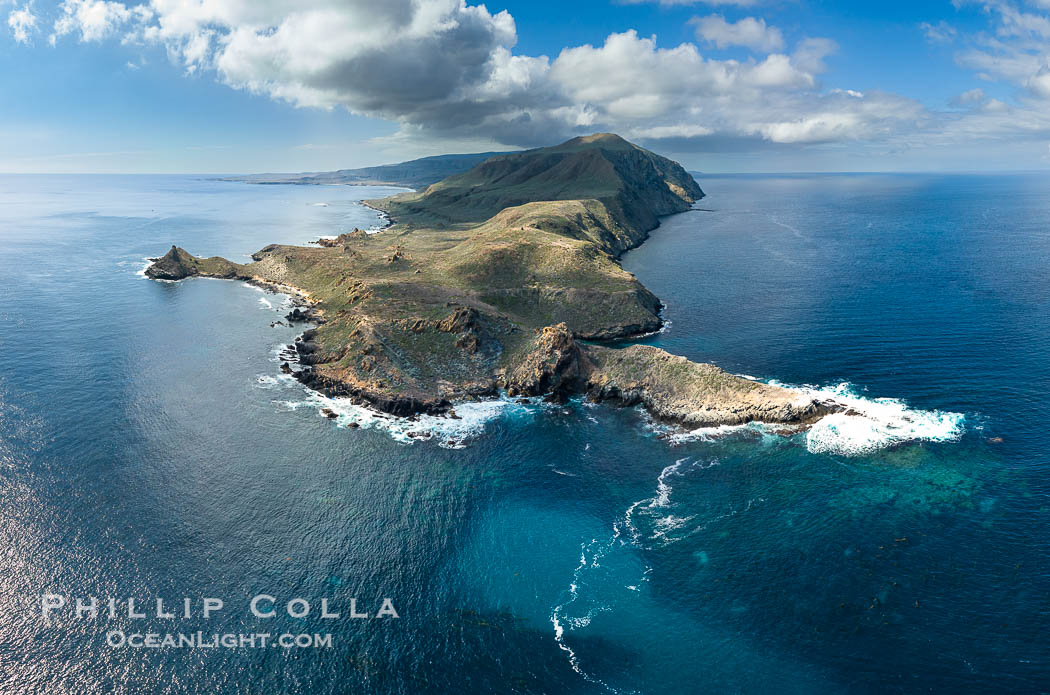
San Clemente Island aerial photo, Pyramid Head and Balanced Rock at the southern end of the island. San Clemente Island Pyramid Head, the distinctive pyramid shaped southern end of the island, exhibits distinctive geologic terracing, underwater reefs and giant kelp forests.
Image ID: 38483
Location: San Clemente Island, California
My goal was to spend the entire trip cruising along the rugged, incredibly varied terrain that makes up the rocky reef here, photographing the brilliantly-colored gorgonians that dot the reef and trying to portray the ruggedness of the reef itself. The former is easy and I’ve been doing it for years but I needed to break out of my usual approach to photographing gorgonians so I used my circular fisheye for most of the photographs I attempted just to produce something different. The circular fisheye is a difficult lens to use — strobe placement is not obvious and backscatter is virtually impossible to avoid. I did manage some keepers which are below. As for depicting the reef itself — the crevices, knobs, walls, overhangs and slopes — it has never been clear to me how best to do that. I swam around and contemplated it for two days. I have tried many times in the past with limited success to depict the reef itself, but since it is typically covered with dark vegetation-like algae and shadowed by the giant forests of kelp that grow above it it is not easy to illustrate in a photo. I tried a number of different ways of lighting the rock that makes up the reef itself, and found I had to capture a lot of light — several stops more than normal — in order to have any chance of depicting how the reef walls and bottom appear. Some of the those results are below.
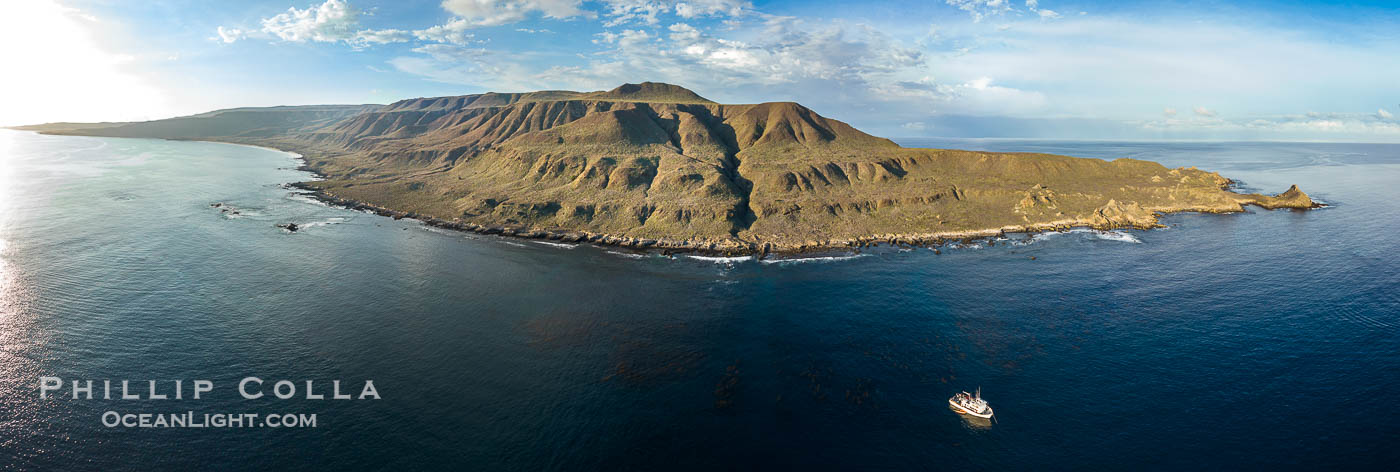
San Clemente Island aerial photo, Pyramid Head and Balanced Rock at the southern end of the island. San Clemente Island Pyramid Head, the distinctive pyramid shaped southern end of the island, exhibits distinctive geologic terracing, underwater reefs and giant kelp forests.
Image ID: 38485
Location: San Clemente Island, California
By the way, if you never put your head underwater at San Clemente Island you will have a hard time understanding what the bottom terrain looks like. One way to visualize it is to look at the coastline just above the surface and imagine that extends underwater as well. In the above image, which depicts the southern coastline of San Clemente Island from Sun Point on the left to Balanced Rock (China Hat) on the right, clear geologic terracing is seen. These terraces were created as the sea level changed over eons and continue underwater in the same way they appear above the ocean surface, in steps that offer a lot of vertical relief.

Sunset at San Clemente Island, south end showing Pyramid Head. Panoramic photo.
Image ID: 38500
Location: San Clemente Island, California
Below are some of the underwater images I kept from the trip. I was pretty happy with the lot, although I confess that the circular fisheye composition is gimmicky and grows old quickly. Cheers, and thanks for looking!
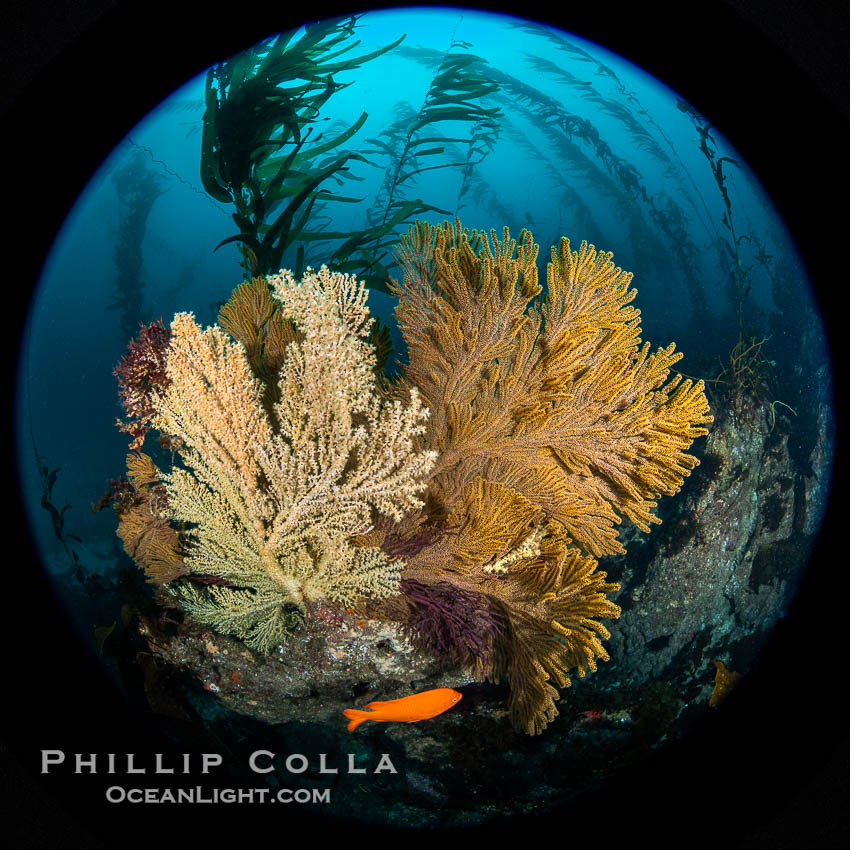
Parasitic zoanthid anemones cover, encrust and overwhelm a golden gorgonian. The gorgonian on the left has been completely parasitized by zoanthid anemones, while the gorgonian to the right remains free of zoanthids (for now). A garibaldi swims below the two sea fans. The golden gorgonian is a filter-feeding temperate colonial species that lives on the rocky bottom at depths between 50 to 200 feet deep. Each individual polyp is a distinct animal, together they secrete calcium that forms the structure of the colony. Gorgonians are oriented at right angles to prevailing water currents to capture plankton drifting by.
Image ID: 38493
Species: California golden gorgonian, Luminescent parazoanthid, Zoanthid anemone, Giant kelp, Muricea californica, Parazoanthus lucificum, Savalia lucifica, Macrocystis pyrifera
Location: San Clemente Island, California
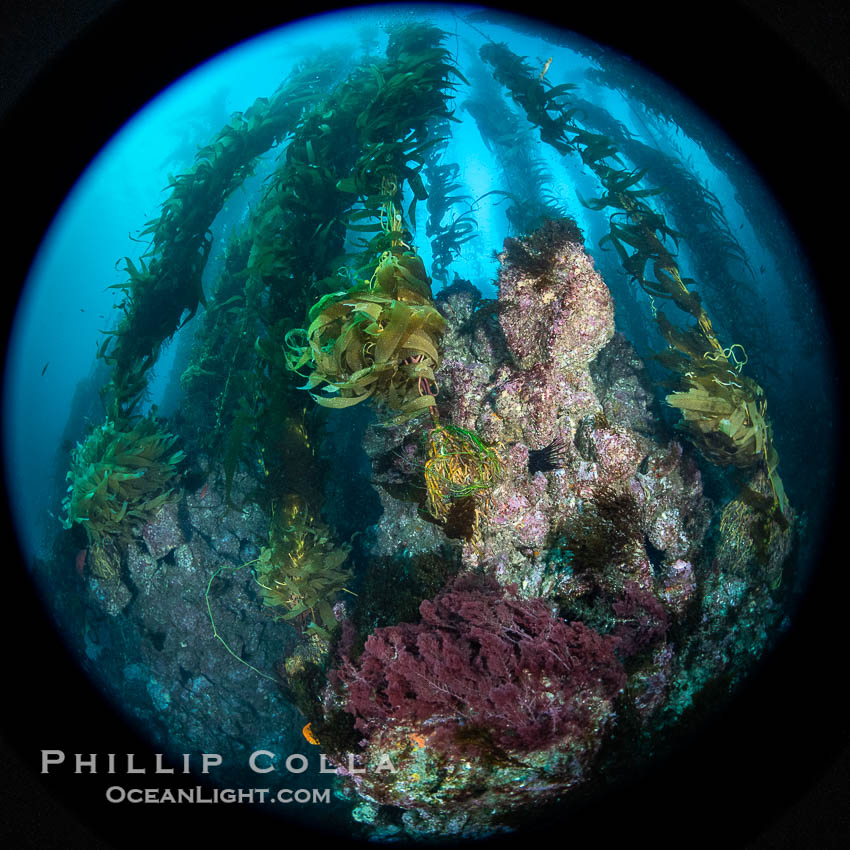
The Kelp Forest and Rocky Reef of San Clemente Island. Giant kelp grows rapidly, up to 2' per day, from the rocky reef on the ocean bottom to which it is anchored, toward the ocean surface where it spreads to form a thick canopy. Myriad species of fishes, mammals and invertebrates form a rich community in the kelp forest. Lush forests of kelp are found throughout California's Southern Channel Islands.
Image ID: 38494
Species: Giant kelp, Macrocystis pyrifera
Location: San Clemente Island, California
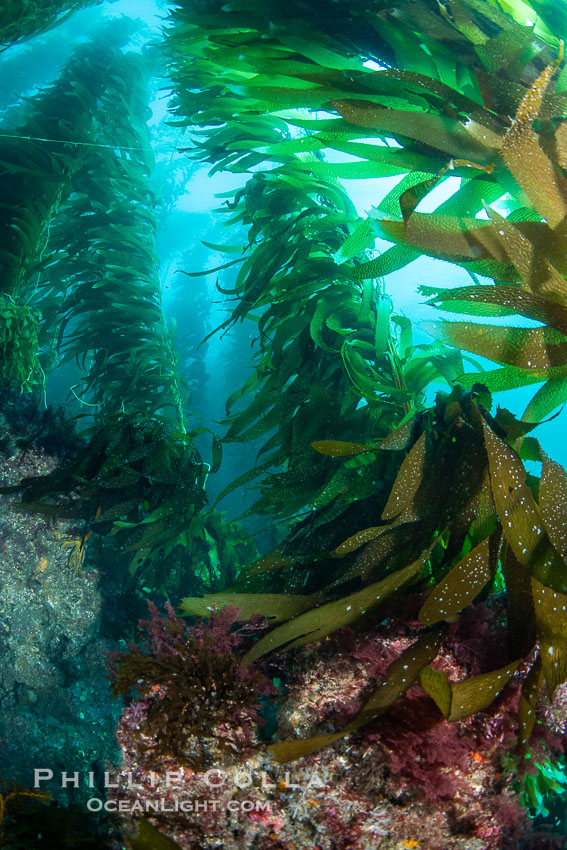
The Kelp Forest and Rocky Reef of San Clemente Island. Giant kelp grows rapidly, up to 2' per day, from the rocky reef on the ocean bottom to which it is anchored, toward the ocean surface where it spreads to form a thick canopy. Myriad species of fishes, mammals and invertebrates form a rich community in the kelp forest. Lush forests of kelp are found throughout California's Southern Channel Islands.
Image ID: 38495
Species: Giant kelp, Macrocystis pyrifera
Location: San Clemente Island, California
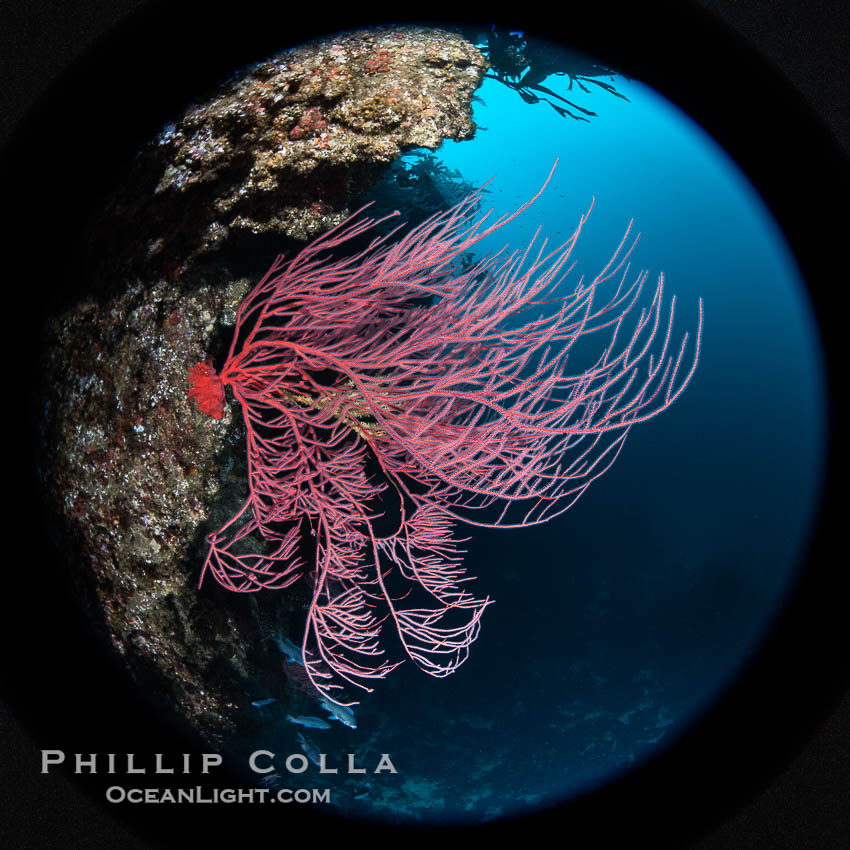
Red gorgonian on rocky reef, below kelp forest, underwater. The red gorgonian is a filter-feeding temperate colonial species that lives on the rocky bottom at depths between 50 to 200 feet deep. Gorgonians are typically oriented at right angles to prevailing water currents to capture plankton drifting by.
Image ID: 38496
Species: Red gorgonian, Leptogorgia chilensis, Lophogorgia chilensis
Location: San Clemente Island, California
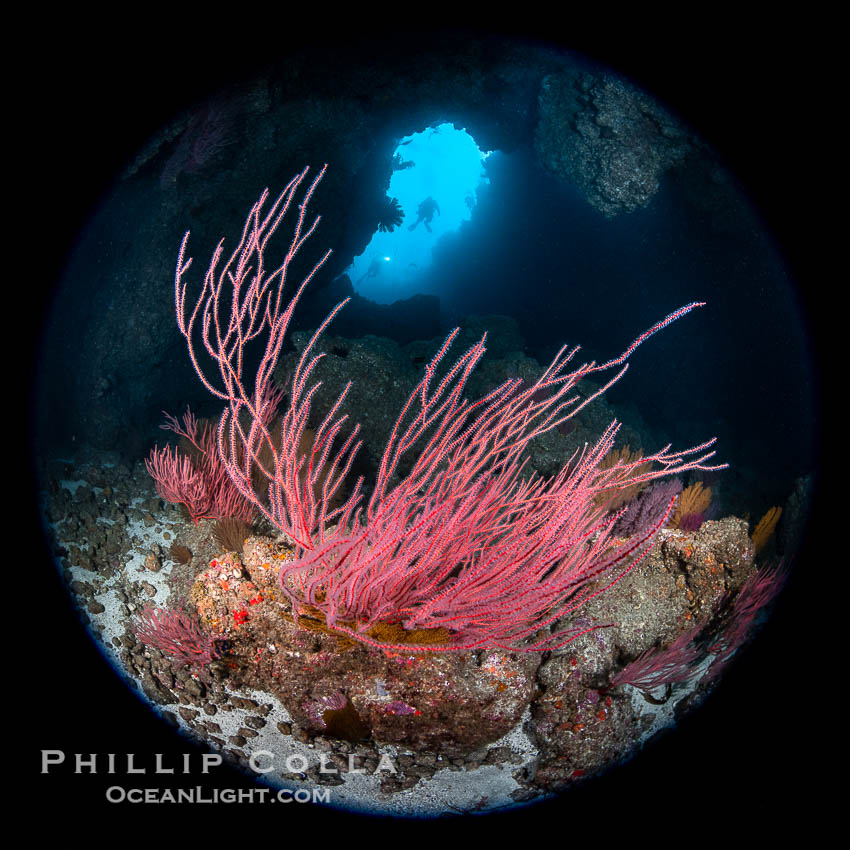
Red Gorgonians form a lush colorful garden below a submarine arch, while two scuba divers pass through the opening to the cavern.
Image ID: 38497
Species: Red gorgonian, Leptogorgia chilensis, Lophogorgia chilensis
Location: San Clemente Island, California
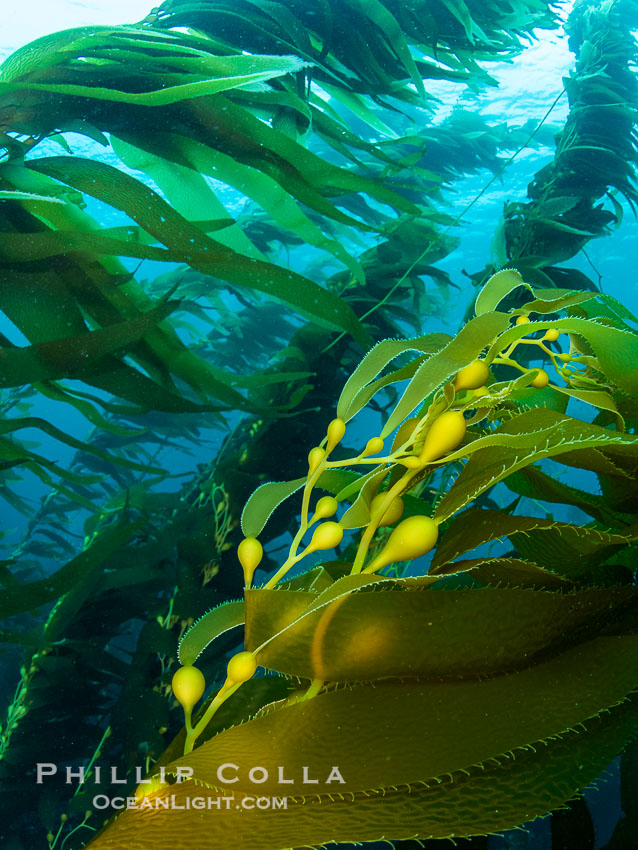
Kelp fronds showing pneumatocysts, bouyant gas-filled bubble-like structures which float the kelp plant off the ocean bottom toward the surface, where it will spread to form a roof-like canopy.
Image ID: 38498
Species: Giant kelp, Macrocystis pyrifera
Location: San Clemente Island, California
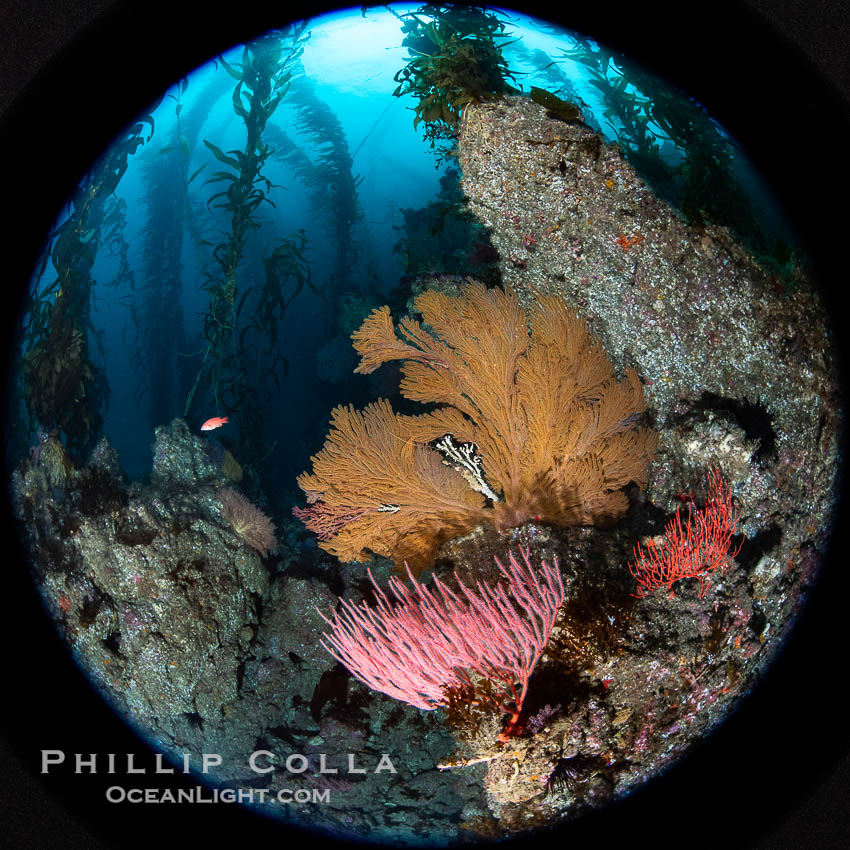
Red gorgonian and California golden gorgonian on underwater rocky reef, San Clemente Island. The golden gorgonian is a filter-feeding temperate colonial species that lives on the rocky bottom at depths between 50 to 200 feet deep. Each individual polyp is a distinct animal, together they secrete calcium that forms the structure of the colony. Gorgonians are oriented at right angles to prevailing water currents to capture plankton drifting by.
Image ID: 38499
Species: Red gorgonian, California golden gorgonian, Leptogorgia chilensis, Lophogorgia chilensis, Muricea californica
Location: San Clemente Island, California
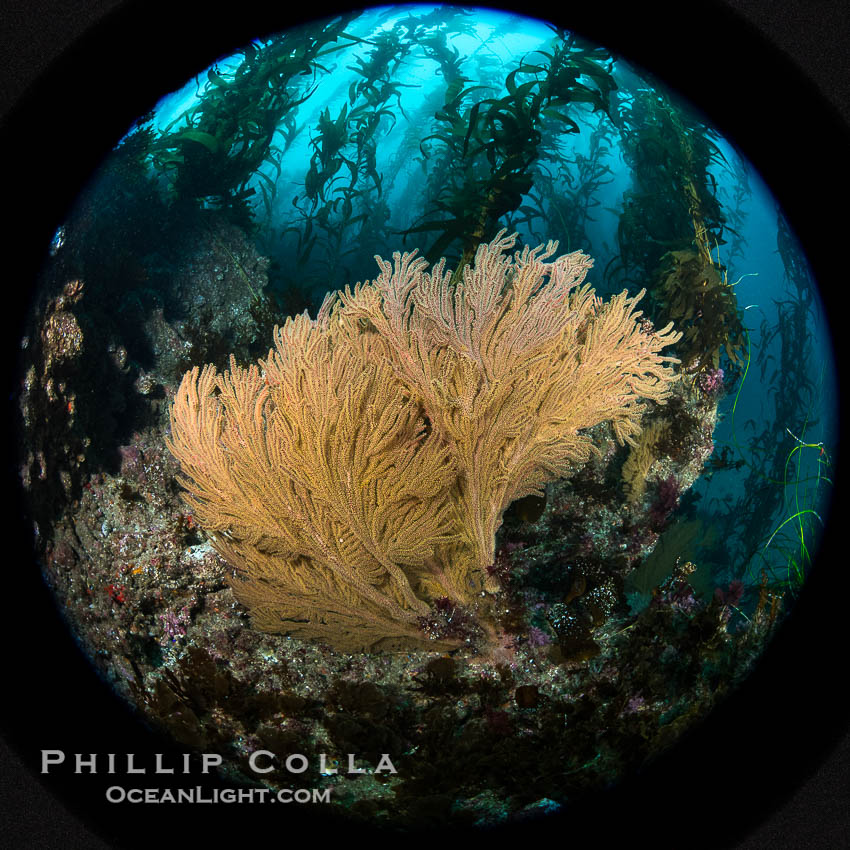
Garibaldi and California golden gorgonian on underwater rocky reef, San Clemente Island. The golden gorgonian is a filter-feeding temperate colonial species that lives on the rocky bottom at depths between 50 to 200 feet deep. Each individual polyp is a distinct animal, together they secrete calcium that forms the structure of the colony. Gorgonians are oriented at right angles to prevailing water currents to capture plankton drifting by.
Image ID: 38501
Species: California golden gorgonian, Giant kelp, Muricea californica, Macrocystis pyrifera
Location: San Clemente Island, California
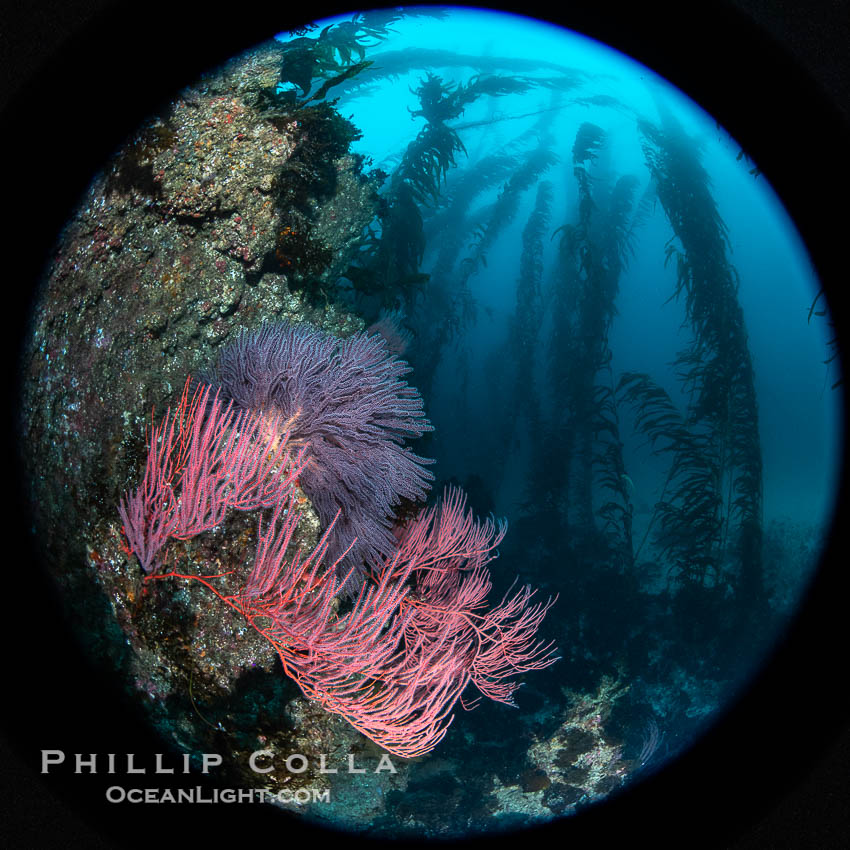
Red gorgonian on rocky reef, below kelp forest, underwater. The red gorgonian is a filter-feeding temperate colonial species that lives on the rocky bottom at depths between 50 to 200 feet deep. Gorgonians are typically oriented at right angles to prevailing water currents to capture plankton drifting by.
Image ID: 38502
Species: Red gorgonian, Giant kelp, Brown gorgonian, Leptogorgia chilensis, Lophogorgia chilensis, Macrocystis pyrifera, Muricea fruticosa
Location: San Clemente Island, California
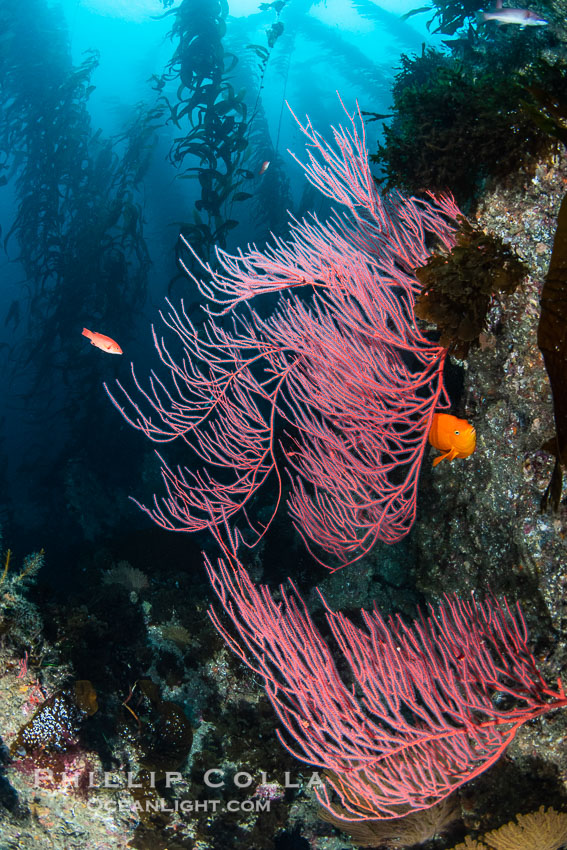
Red gorgonian on rocky reef, below kelp forest, underwater. The red gorgonian is a filter-feeding temperate colonial species that lives on the rocky bottom at depths between 50 to 200 feet deep. Gorgonians are typically oriented at right angles to prevailing water currents to capture plankton drifting by.
Image ID: 38503
Species: Red gorgonian, Giant kelp, Leptogorgia chilensis, Lophogorgia chilensis, Macrocystis pyrifera
Location: San Clemente Island, California
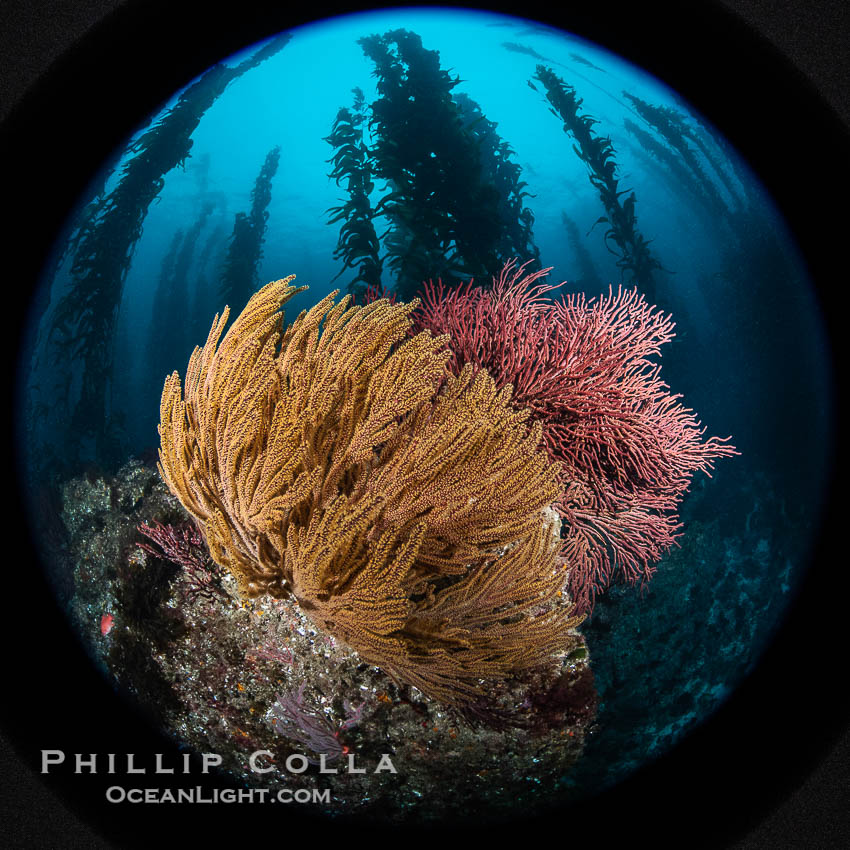
Garibaldi and California golden gorgonian on underwater rocky reef, San Clemente Island. The golden gorgonian is a filter-feeding temperate colonial species that lives on the rocky bottom at depths between 50 to 200 feet deep. Each individual polyp is a distinct animal, together they secrete calcium that forms the structure of the colony. Gorgonians are oriented at right angles to prevailing water currents to capture plankton drifting by.
Image ID: 38504
Species: California golden gorgonian, Giant kelp, Muricea californica, Macrocystis pyrifera
Location: San Clemente Island, California
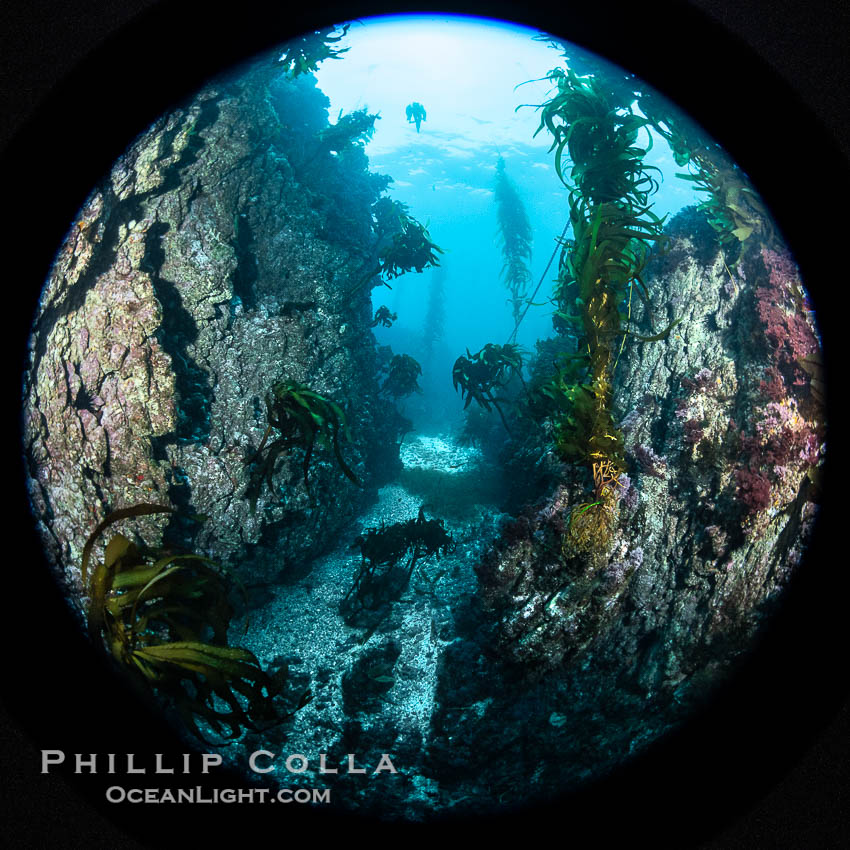
Spectacular underwater rocky reef topography at San Clemente Island, typified by crevices, walls and profuse vertical relief on the rocky ocean bottom below the kelp forest.
Image ID: 38505
Location: San Clemente Island, California
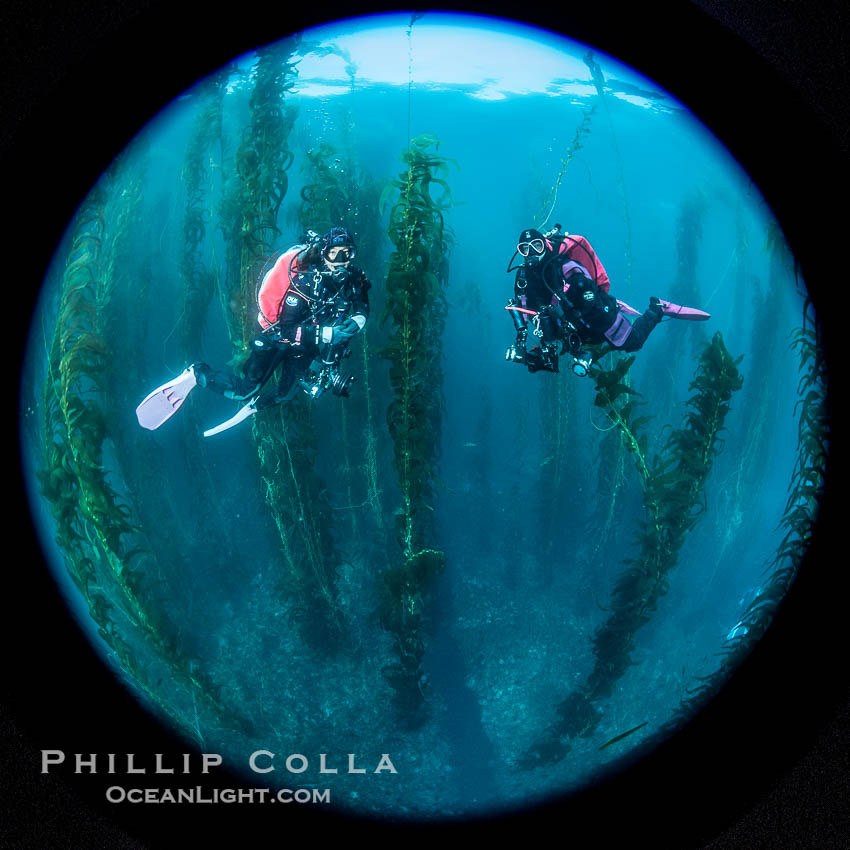
SCUBA divers, San Clemente Island.
Image ID: 38507
Species: Giant kelp, Macrocystis pyrifera
Location: San Clemente Island, California
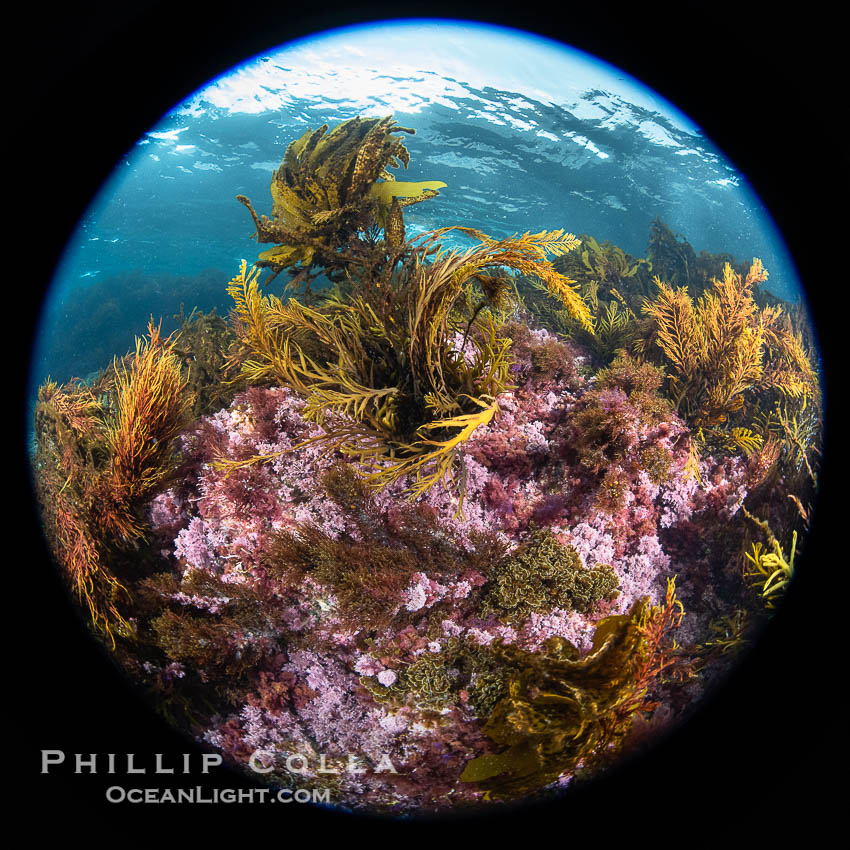
Various marine algae, San Clemente Island.
Image ID: 38508
Location: San Clemente Island, California
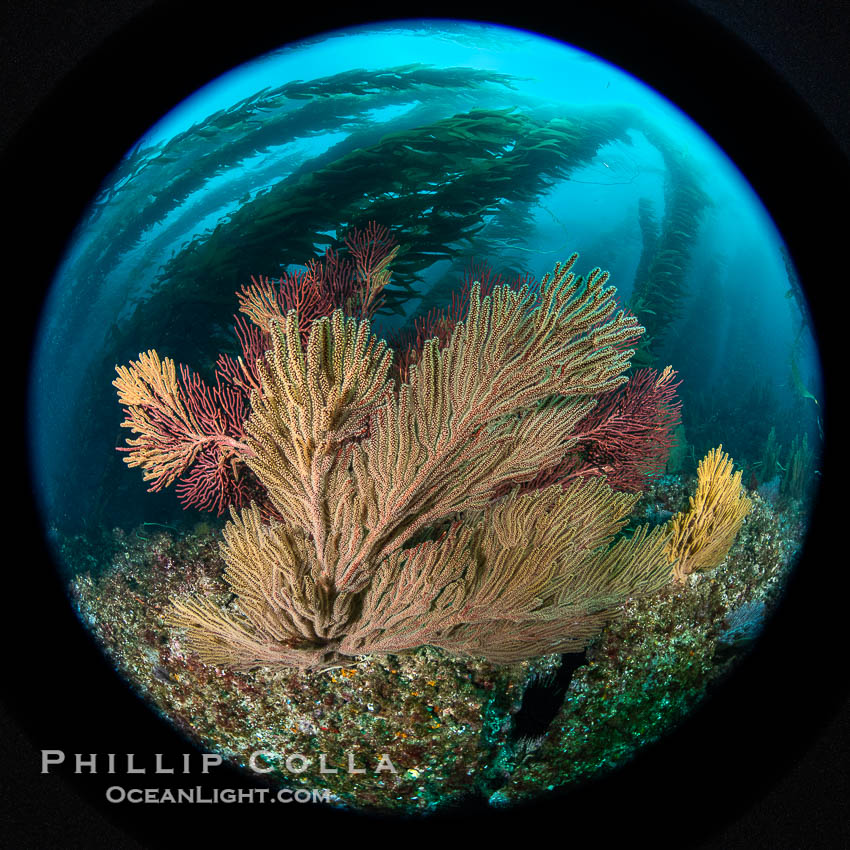
Garibaldi and California golden gorgonian on underwater rocky reef, San Clemente Island. The golden gorgonian is a filter-feeding temperate colonial species that lives on the rocky bottom at depths between 50 to 200 feet deep. Each individual polyp is a distinct animal, together they secrete calcium that forms the structure of the colony. Gorgonians are oriented at right angles to prevailing water currents to capture plankton drifting by.
Image ID: 38509
Species: California golden gorgonian, Giant kelp, Muricea californica, Macrocystis pyrifera
Location: San Clemente Island, California
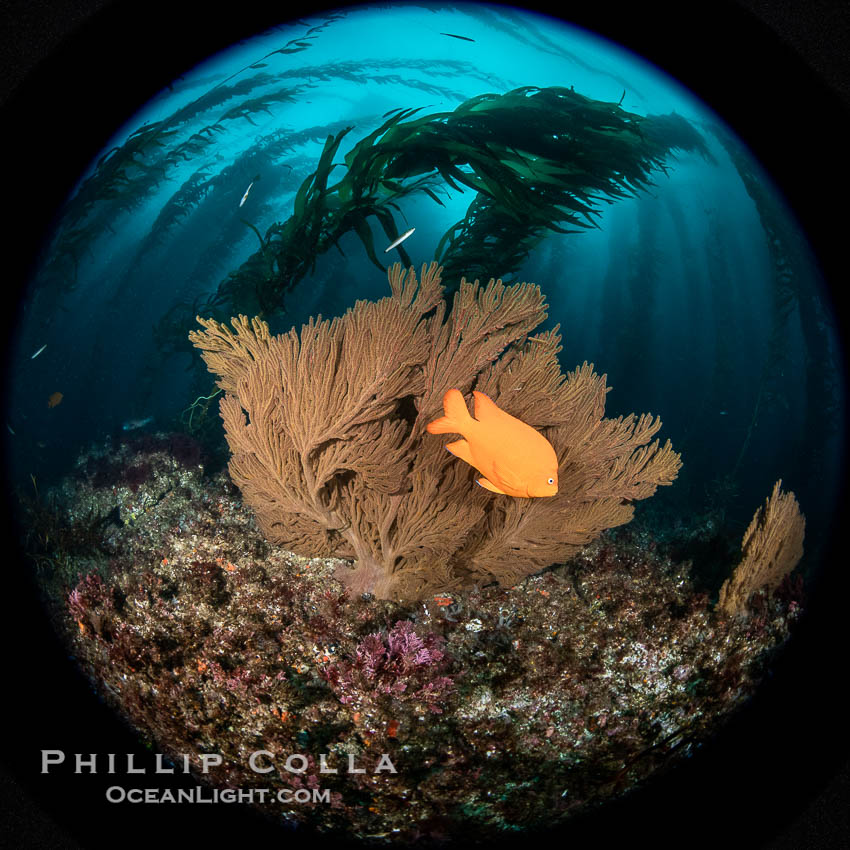
Garibaldi and California golden gorgonian on underwater rocky reef, San Clemente Island. The golden gorgonian is a filter-feeding temperate colonial species that lives on the rocky bottom at depths between 50 to 200 feet deep. Each individual polyp is a distinct animal, together they secrete calcium that forms the structure of the colony. Gorgonians are oriented at right angles to prevailing water currents to capture plankton drifting by.
Image ID: 38510
Species: California golden gorgonian, Giant kelp, Garibaldi, Muricea californica, Macrocystis pyrifera, Hypsypops rubicundus
Location: San Clemente Island, California
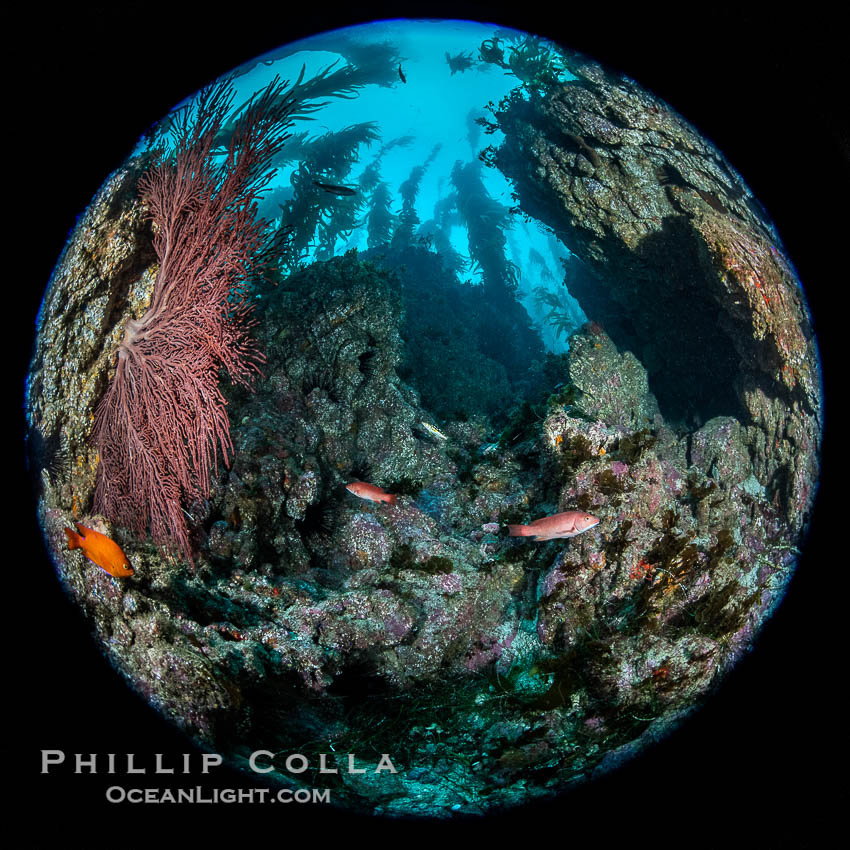
Spectacular underwater rocky reef topography at San Clemente Island, typified by crevices, walls and profuse vertical relief on the rocky ocean bottom below the kelp forest.
Image ID: 38512
Species: Brown gorgonian, Muricea fruticosa
Location: San Clemente Island, California
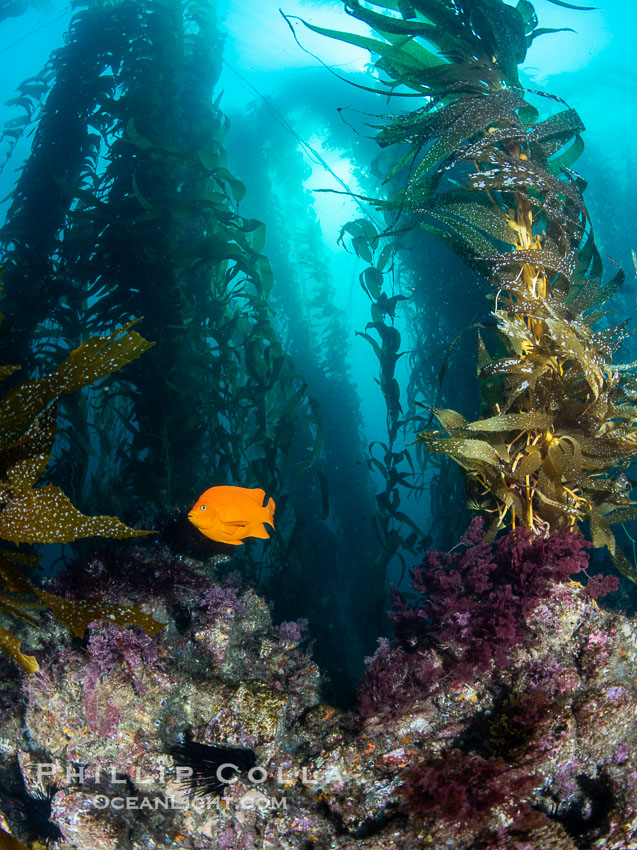
The Kelp Forest and Rocky Reef of San Clemente Island. Giant kelp grows rapidly, up to 2' per day, from the rocky reef on the ocean bottom to which it is anchored, toward the ocean surface where it spreads to form a thick canopy. Myriad species of fishes, mammals and invertebrates form a rich community in the kelp forest. Lush forests of kelp are found throughout California's Southern Channel Islands.
Image ID: 38513
Species: Giant kelp, Garibaldi, Macrocystis pyrifera, Hypsypops rubicundus
Location: San Clemente Island, California
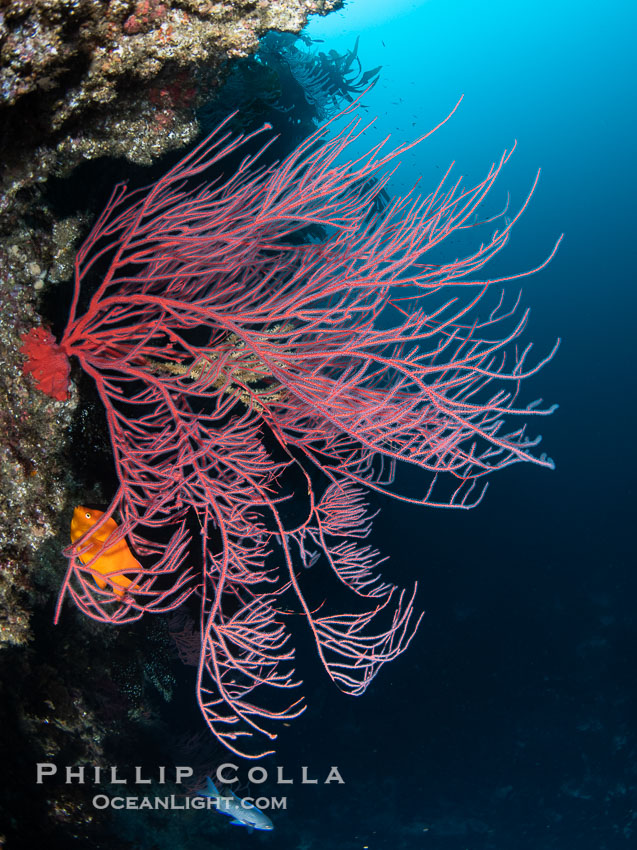
Red gorgonian on rocky reef, below kelp forest, underwater. The red gorgonian is a filter-feeding temperate colonial species that lives on the rocky bottom at depths between 50 to 200 feet deep. Gorgonians are typically oriented at right angles to prevailing water currents to capture plankton drifting by.
Image ID: 38519
Species: Red gorgonian, Leptogorgia chilensis, Lophogorgia chilensis
Location: San Clemente Island, California
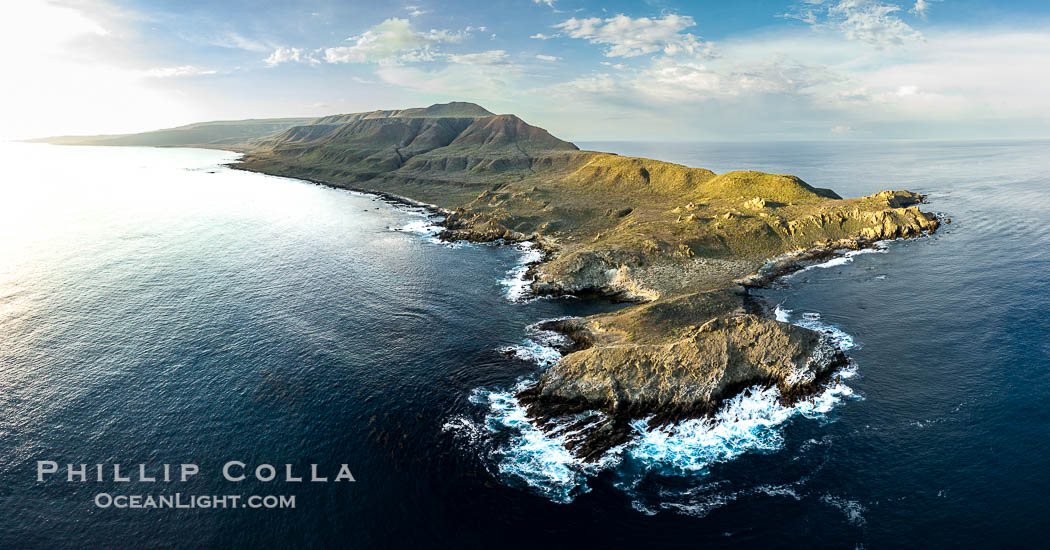
San Clemente Island aerial photo, Pyramid Head and Balanced Rock at the southern end of the island. San Clemente Island Pyramid Head, the distinctive pyramid shaped southern end of the island, exhibits distinctive geologic terracing, underwater reefs and giant kelp forests.
Image ID: 38484
Location: San Clemente Island, California
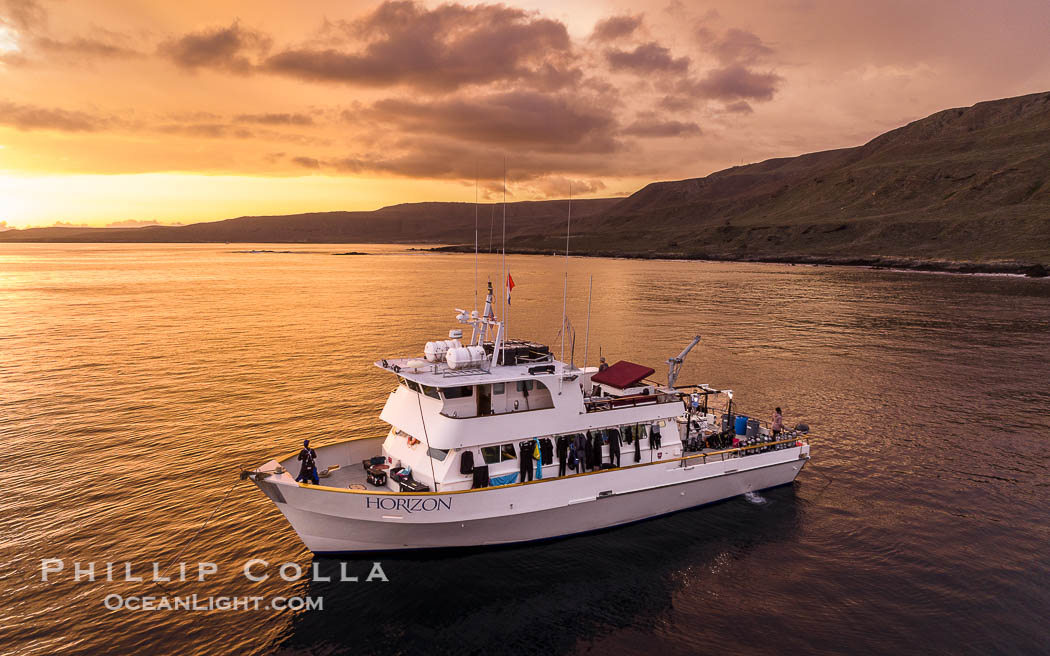
Sunset and Boat Horizon at San Clemente Island, aerial photo.
Image ID: 38491
Location: San Clemente Island, California
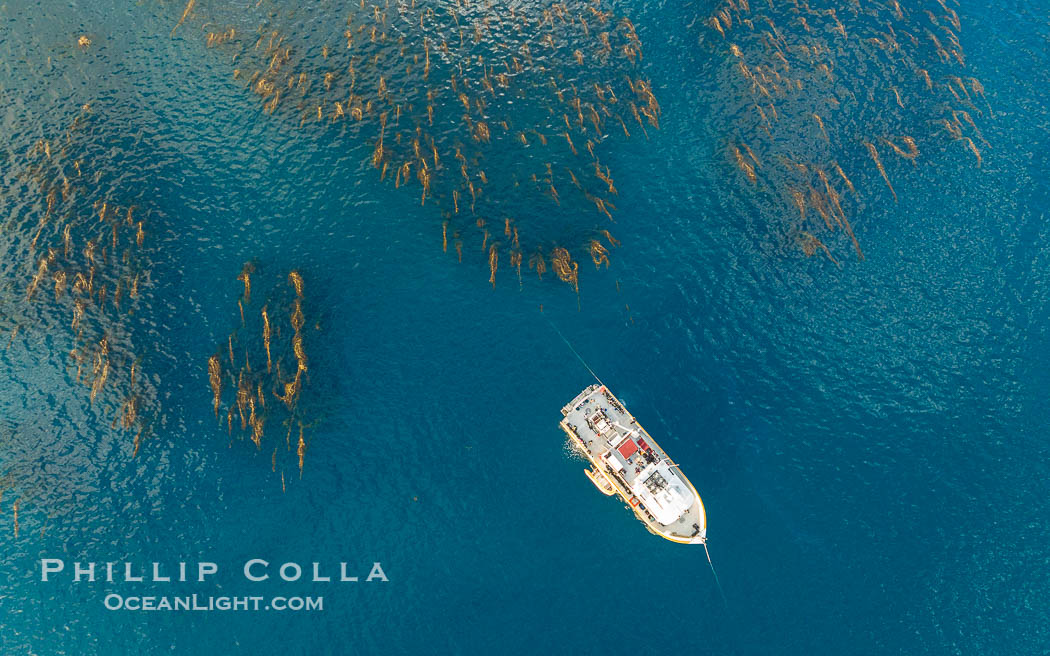
Boat Horizon at San Clemente Island, aerial photo.
Image ID: 38492
Location: San Clemente Island, California



